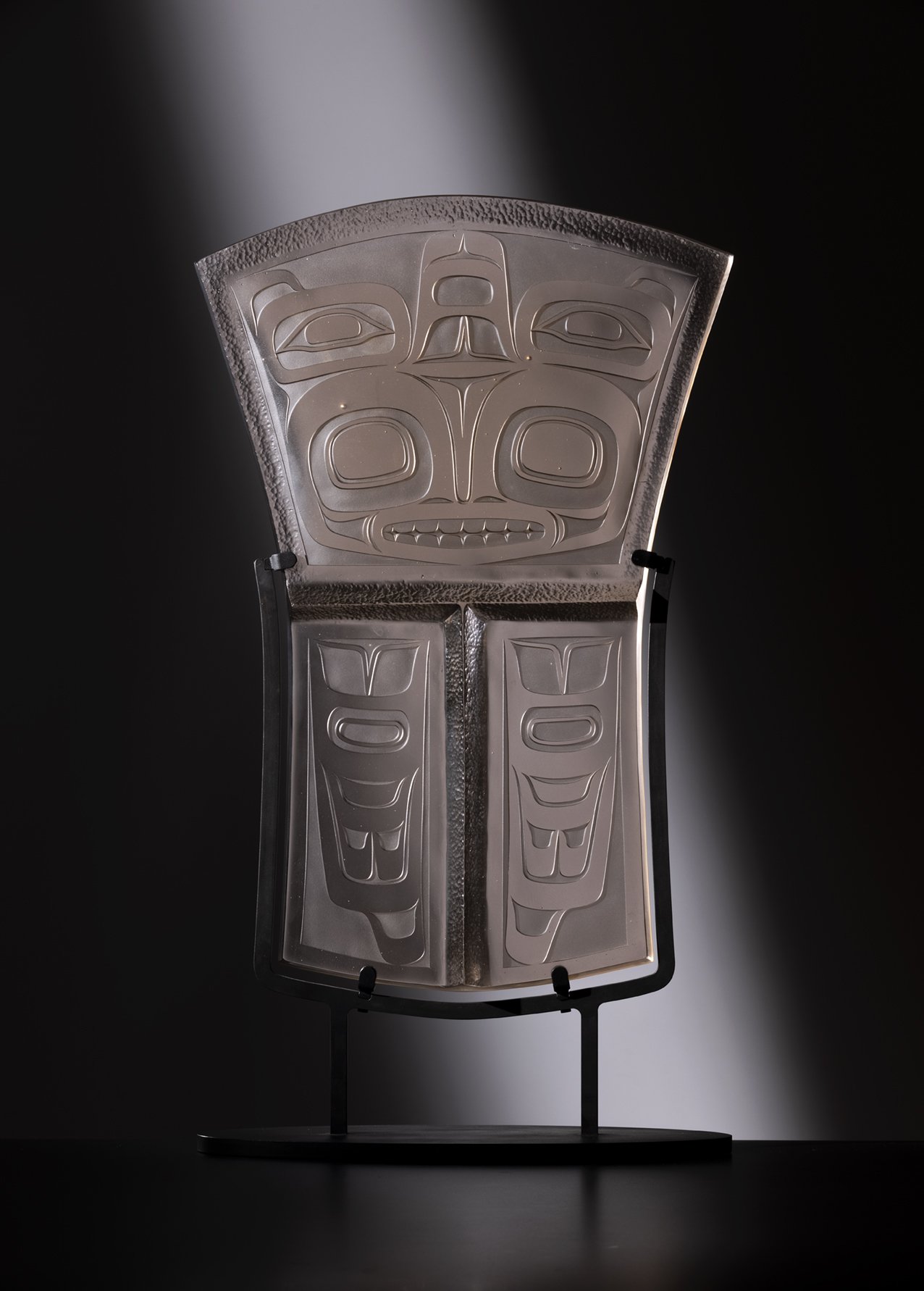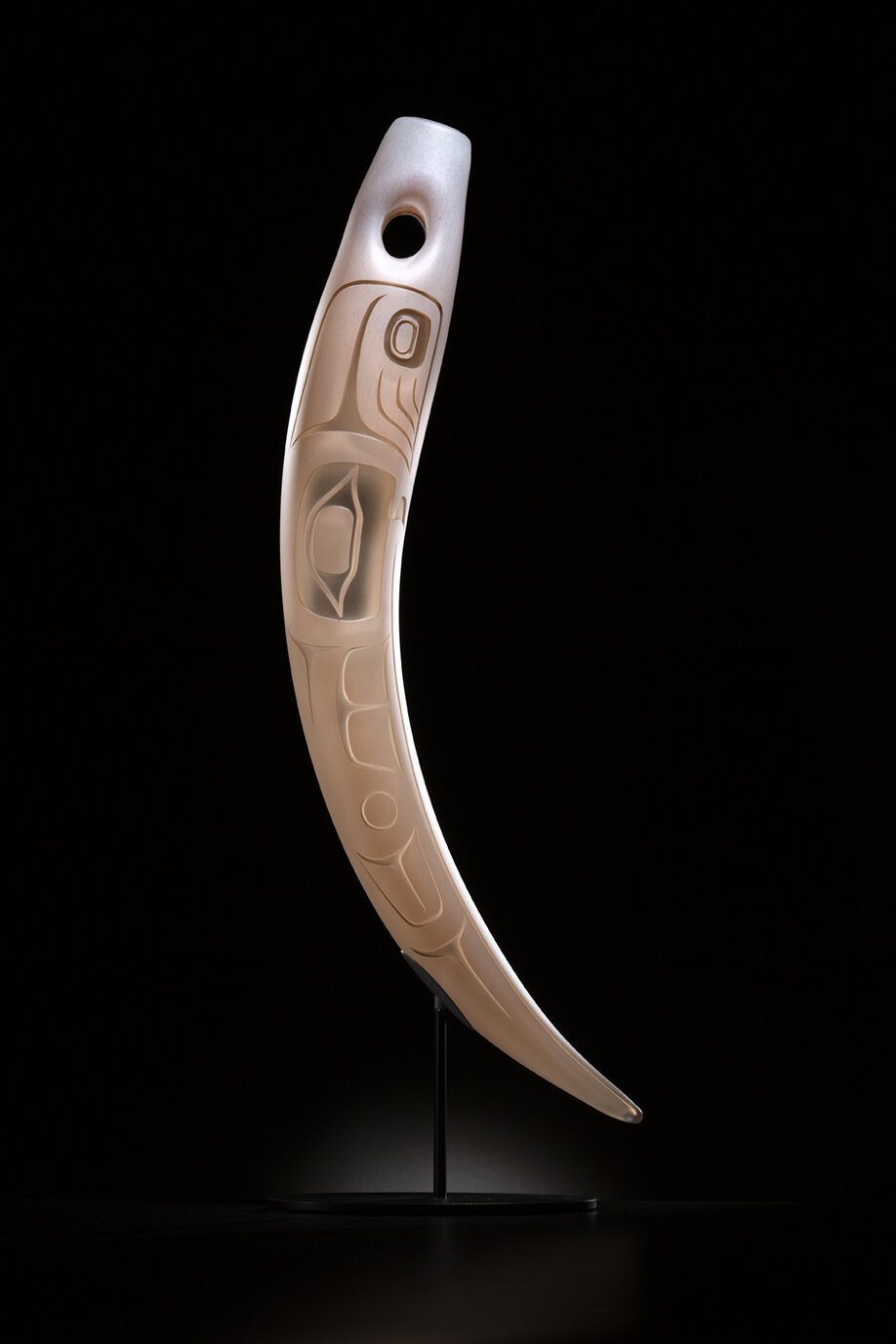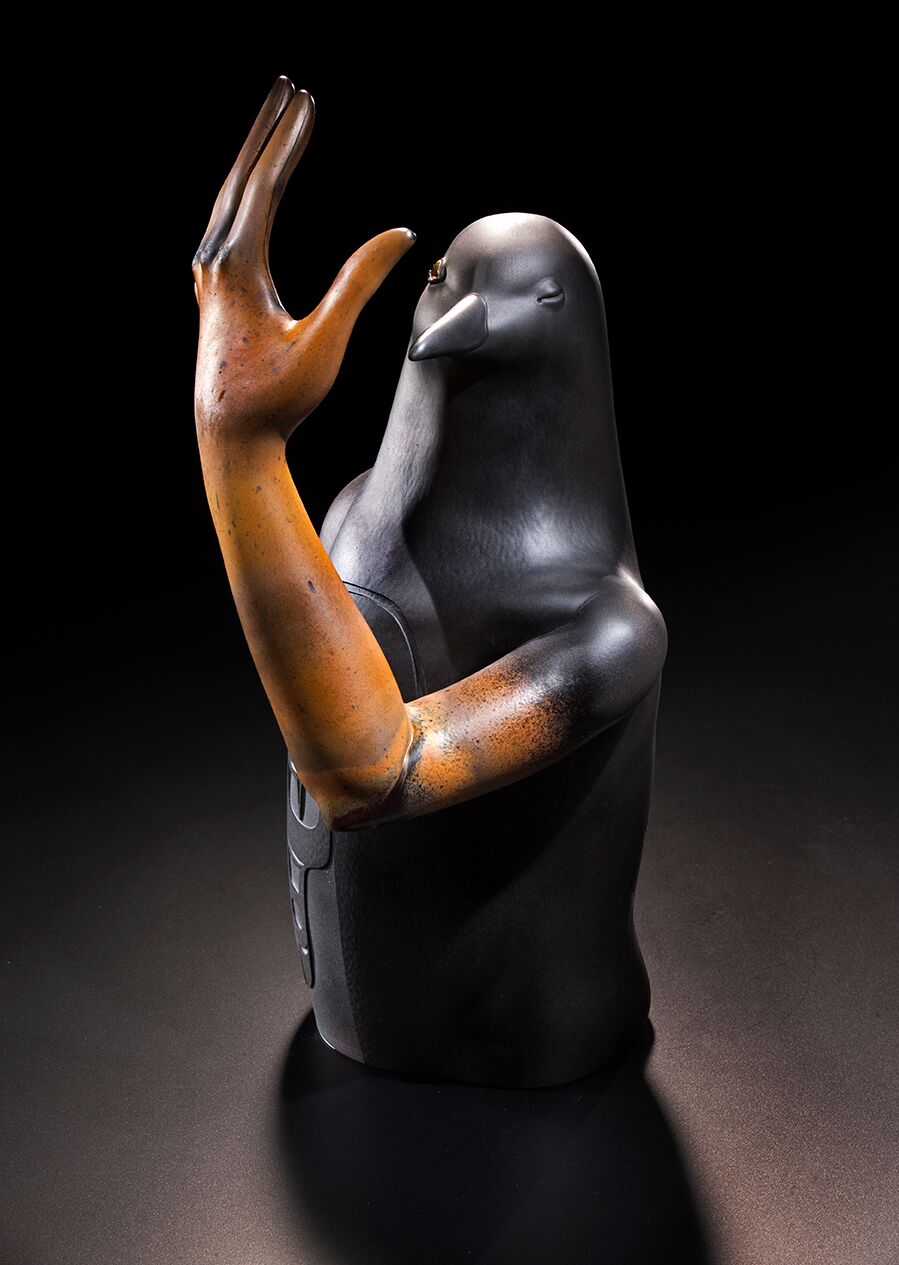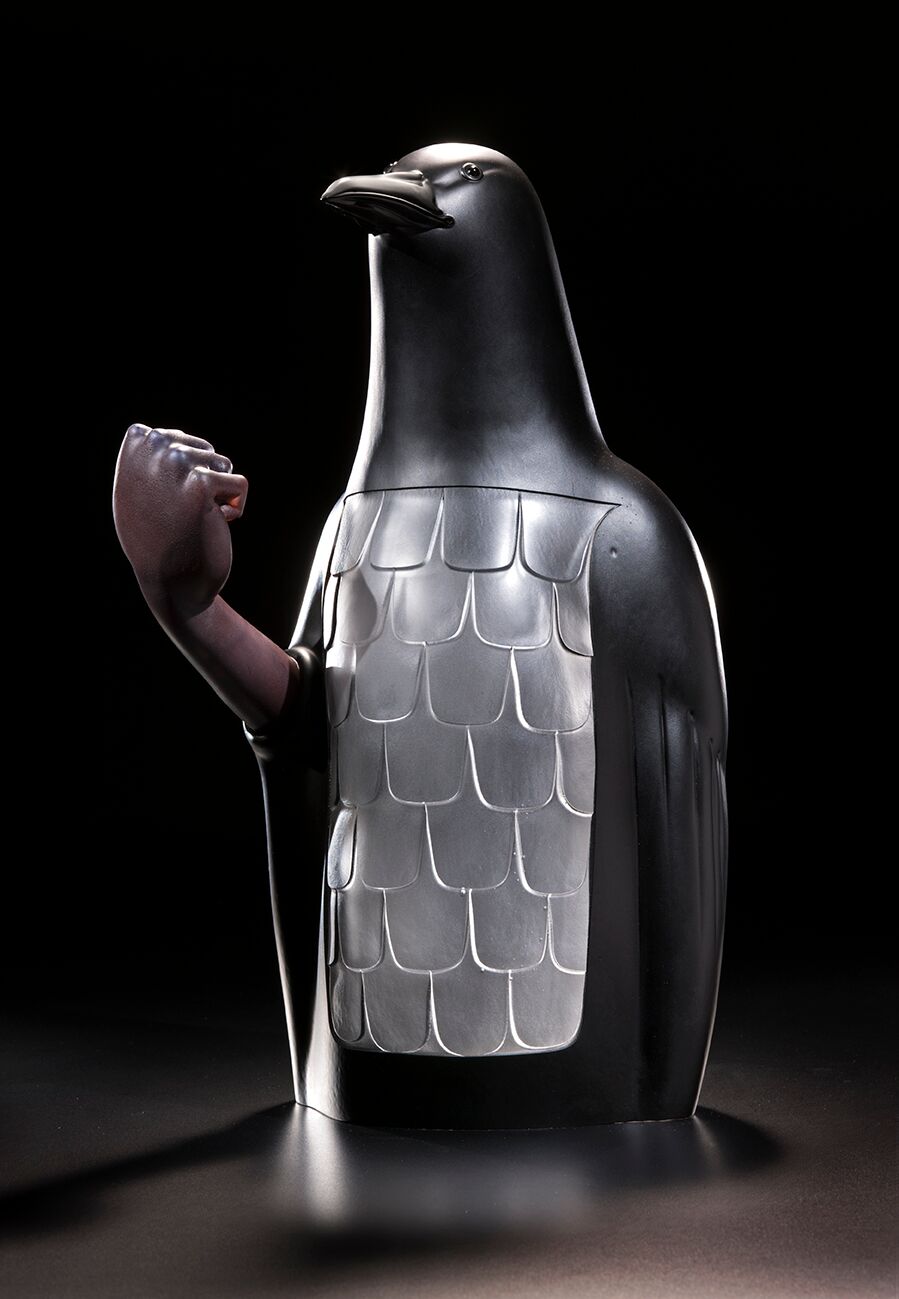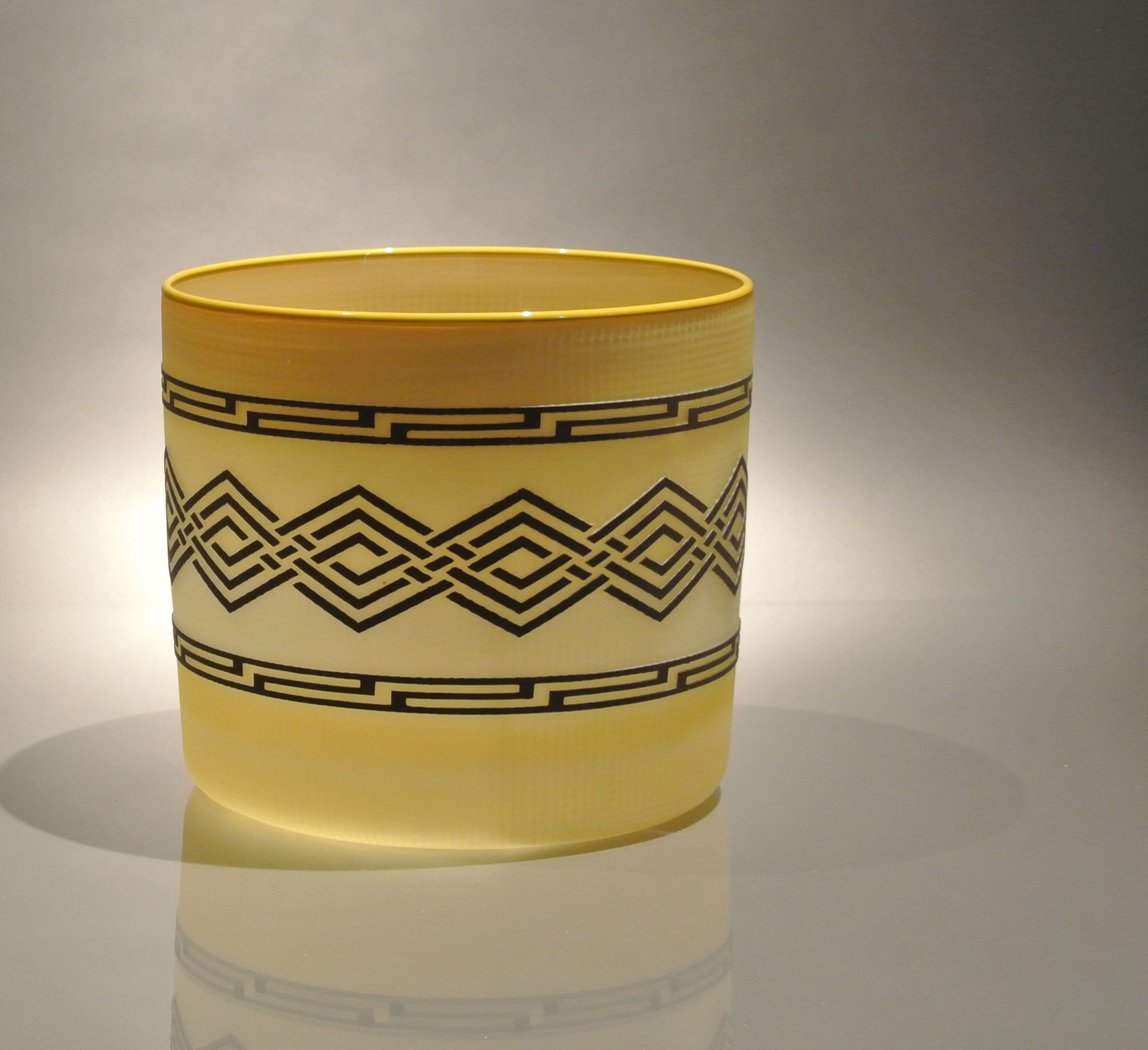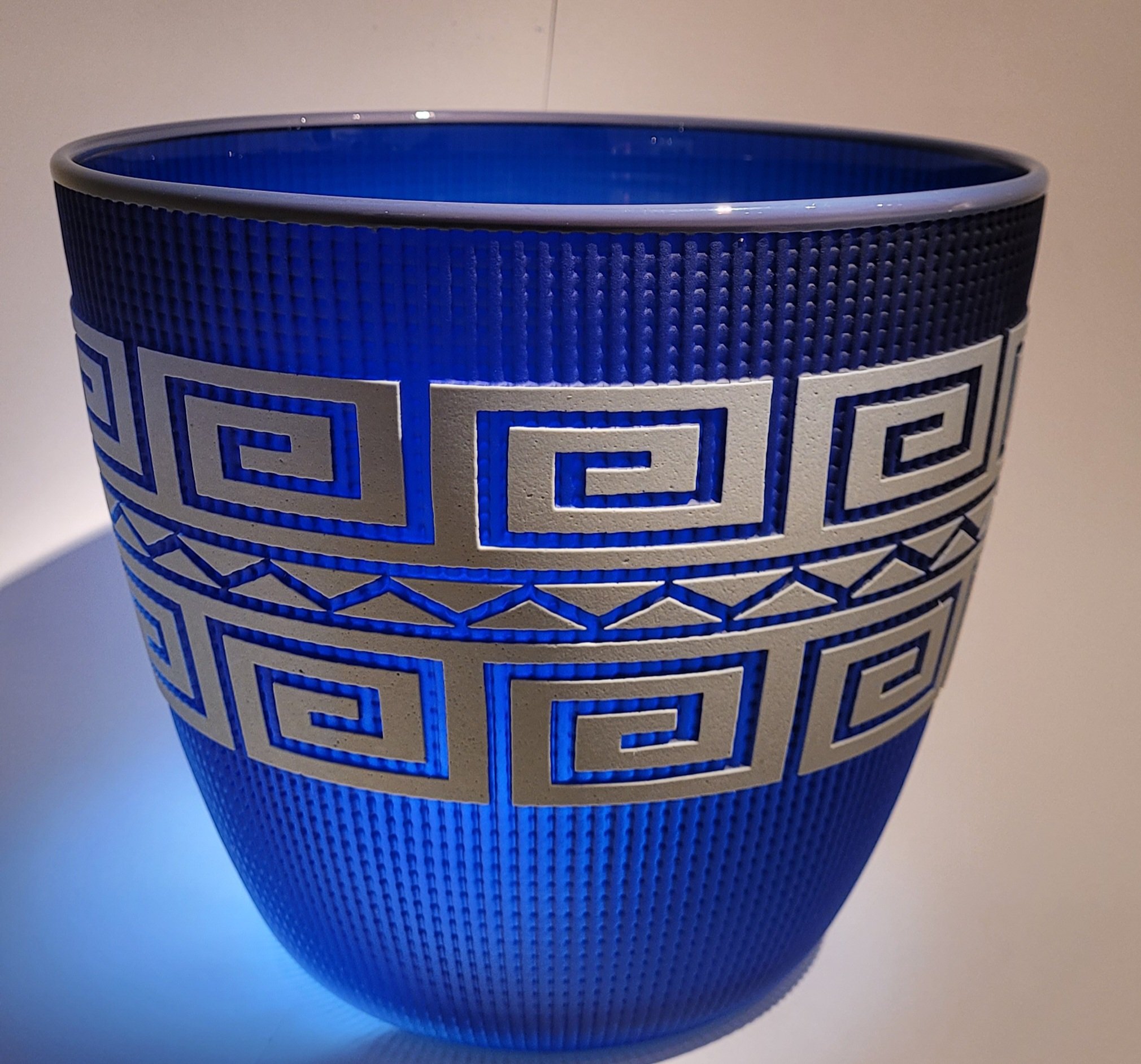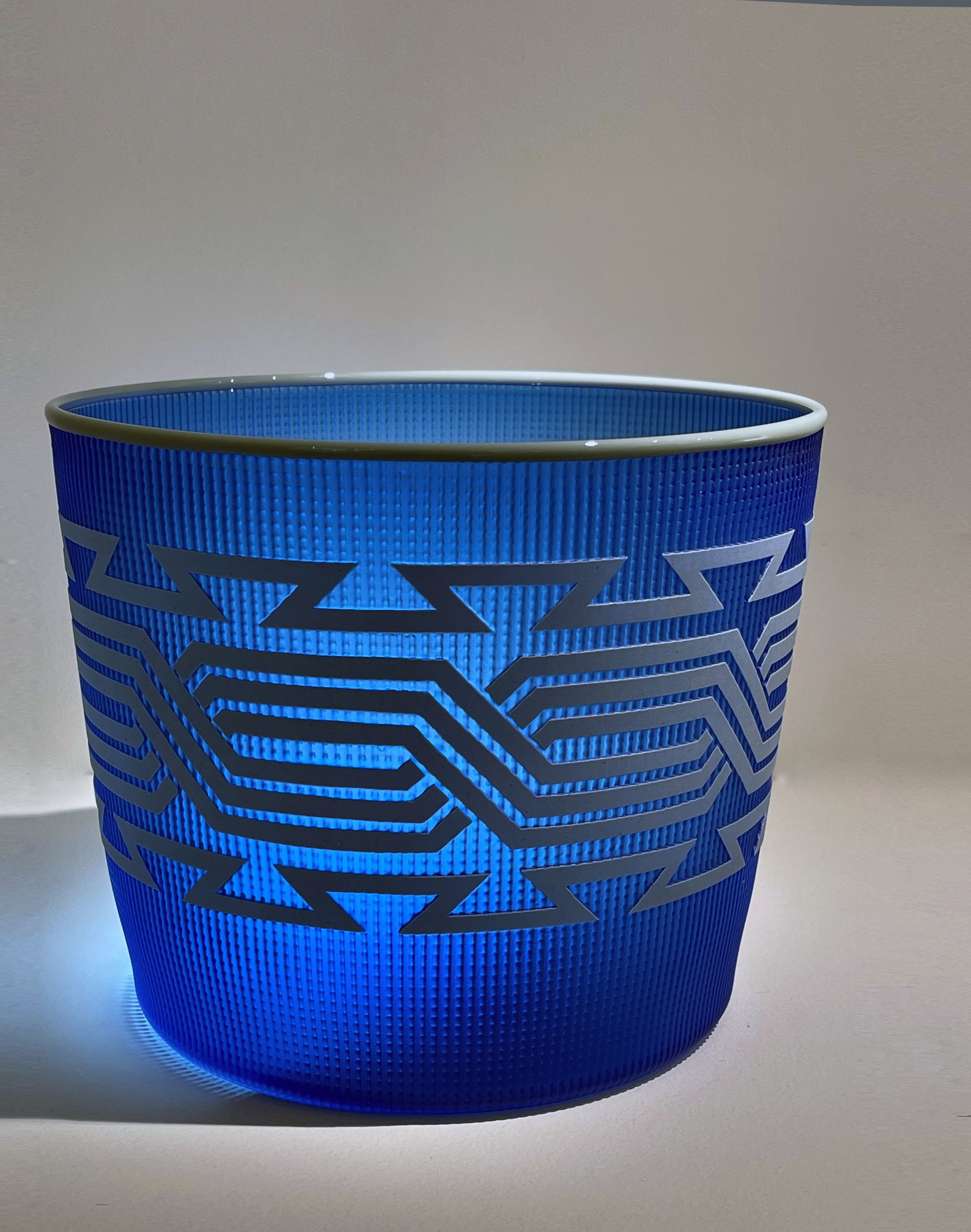a precious piece of culture…
Known for his distinctive style, Preston Singletary simultaneously elevates studio glass art and interprets Tlingit design to create innovative works. A Tlingit tribal member, he began exploring their aesthetic to connect deeper with his roots. Through his glasswork, he has brought attention to his ancestral art. Traditionally stylistic Tlingit drawings are carved into the glass, depicting different moments and characters from mythological stories handed down for generations within the tribe.
Like all of us, Preston Singletary is adapting his life to Covid-19, but his glass work never really took a break. His band, another extension of his creativity and reflection of his tribal culture, was set to begin recording several new pieces right before quarantine. They had to put their musical practice on hold, but plan to reunite virtually and perform in October. But during quarantine, the glass studio kept working. Singletary’s process occurs in several stages (blowing, shaping, sculpting, drawing, applying the drawing, carving, and more), which made this adaptation relatively easy. He had some pieces that had been blown and were waiting for the cold-working process, so he was able to finish those. Then, Singletary and his team produced work from home, with each individual working on their part before passing the piece on, either sending the work from person to person or taking turns in the studio.
Singletary explains: “It worked out pretty well, we were able to be fairly productive during this time. It was … a different experience because I usually work very closely with my team.”
Now that things are opening back up, he has once again fired up the furnace in his studio. With 3,000 square-feet space, Singletary’s studio is relatively large by Seattle standards. Singletary inherited the former art school and metalwork foundry from Schantz Galleries artist Sonja Blomdahl, who worked in the space for 20 years before Preston took over. The space encompasses a showroom, office, and peaceful drawing space on the second floor for Preston, in addition to the hot shop and cold work areas on the first floor. For the past 15 years, this has been the place where Preston Singletary brings his stories to life.
Preston Singletary at the bench, with Ross Richmond assisting in the hot shop.
As part of our focus on Preston Singletary we wanted to highlight his unique storytelling abilities and his connection to the Tlingit culture. His great grandmother on his mother’s side, Susie Johnson Gubatayo, brought the Tlingit spirit into Preston’s heart and family through the spiritual connections she kept to her tribe after settling in Seattle (where Preston’s mother then Preston himself were raised). A strong presence and true matriarch, Susie carried warm affection for her people, and as Preston explained “…was very proud, Tlingit was her first language, and she was a very strong woman who lived to be 100 years old”. Below, is a wonderful video that illustrates the idea to create a totem for the Pilchuck School, which led to the conception of a large cast glass totem which pays homage to his grandmother and her pet bear. To see more images, go to Preston Singletary’s page on our website.
Singletary at his solo exhibition, Raven and the Box of Daylight.
Storytelling and Tlingit mythology are hallmarks of Preston Singletary’s work, but his immersive museum exhibition Raven in a Box of Daylight (which began in 2018 at the Museum of Glass in Tacoma, traveled to the Wichita Museum, the National Museum of the American Indian at the Smithsonian Institute, and will close at the Chrysler Museum of American Art in Norfolk, VA), pushes the limits of storytelling, tribal art, and glass art in general. (Please note show dates have been extended and/or changed in some cases due to quarantine).
The Raven is a popular and central character in Tlingit stories, and for the Raven in a Box of Daylight exhibition Singletary wanted to explore the many traditional ways—and experiment with his own new ways—of telling this origin story. According to the legend, the Raven brought daylight into the world by releasing it from Naas Shaak Aankáawu’s (Nobleman at the Head of the Nass River’s) box where it was kept hidden. Many of Singletary’s glass works depict mythological stories from the tribe, but in Raven in a Box of Daylight, he adds light, sound, and video elements to bring the viewer into an immersive experience with the story. This show has been getting well-deserved attention not only for its expertly crafted glass but for innovative approach.
Medicine Woman (Raven Woman)
“The work I do is inspired by traditional objects and over the years I have figured out ways of creating modern interpretations of using the traditional design work. So, it is influenced by modern art, abstract art, and yet the overlying driver behind all of that is the mythologies themselves because they all relate back to a particular aspect of a story.
Any one action of a story could be represented in an art piece, the Raven show in particular, really takes that to a pretty far degree. In analyzing the entire story and having it complete as an experience and as intact as it could be as far as the way it was told traditionally.
All of that was trying to immerse the viewer in the atmosphere of the Alaskan coast as well as showing them these objects that represent aspects of the story.”
Preston still lives in Seattle, which is outside the traditional territory of the Tlingit people, but he ventures up to the southeast region of Alaska to visit several times a year. While there, he spends much of his time working with a cultural arts organization strategizing how to proliferate education around all aspects of Tlingit culture, arts, language, and history. This year, the challenges of Covid-19 have heightened the challenges the Tlingit people face in raising cultural awareness. They did find success in an online adaptation of their bi-annual Celebration Festival, an event which usually gathers together different tribes from across southeast Alaska to preform clan songs and dances, showcase traditional clothing and regalia, and participate in an annual art competition. As Preston explains: “It’s one of the only times you are able to see these songs shared with the public outside of the traditional ceremonies. It has become a virtual event and they have put in components of the festival, such as the art competition, and that was one way of adapting to this moment in time that came off pretty well. Not quite the same, but how it had to be.”
While the stories that Preston Singletary tells through his work arise from generations of history, he brings his modern perspective to bear on tradition. The stunning results have the qualities of a precious piece of culture, immortalizing Tlingit traditions and stories for generations to come.
___________
WORKS CURRENTLY AVAILABLE.
